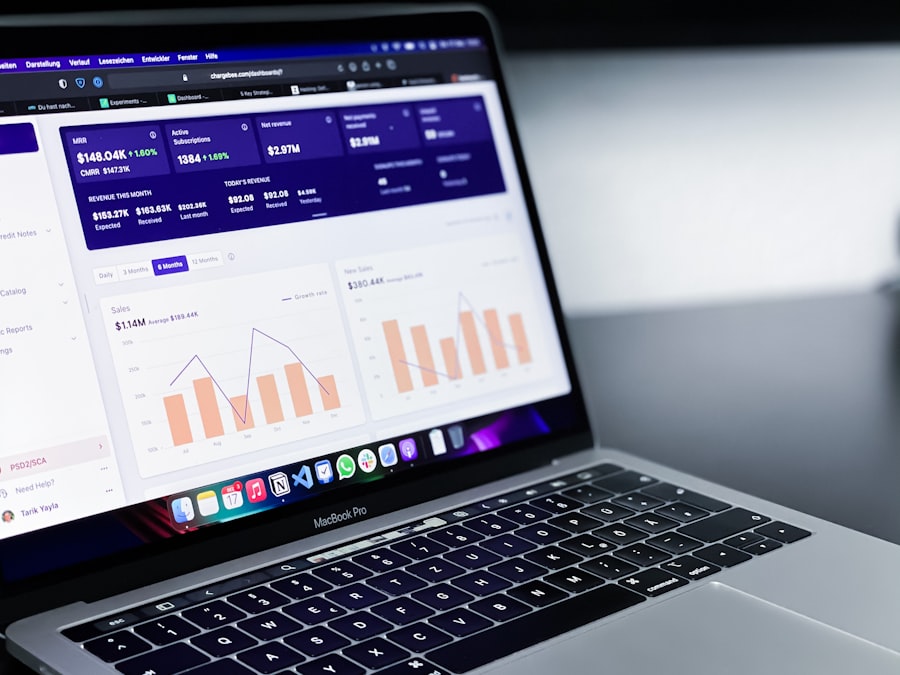Digital marketing encompasses a broad range of online strategies and techniques aimed at promoting products or services through digital channels. At its core, it involves leveraging the internet and electronic devices to connect with potential customers. This can include everything from social media marketing and search engine optimization (SEO) to email campaigns and content marketing.
The primary goal is to reach a targeted audience effectively, engage them, and ultimately convert them into loyal customers. Unlike traditional marketing, which often relies on print ads, billboards, or television commercials, digital marketing allows for more precise targeting and measurable results. One of the fundamental aspects of digital marketing is its ability to provide real-time feedback and analytics.
Businesses can track user behavior, engagement rates, and conversion metrics almost instantaneously. This data-driven approach enables marketers to refine their strategies continuously, optimizing campaigns based on what works best for their audience. For instance, if a particular social media post garners significant engagement, marketers can analyze the elements that contributed to its success and replicate those in future content.
This iterative process is a hallmark of digital marketing, allowing businesses to adapt quickly to changing consumer preferences and market dynamics.
Key Takeaways
- Digital marketing involves promoting products or services using digital channels such as websites, social media, and email.
- Social media can be a powerful tool for businesses to connect with their audience, build brand awareness, and drive sales.
- SEO strategies help businesses improve their website’s visibility in search engine results, driving organic traffic and increasing online presence.
- Email marketing allows businesses to reach their target audience directly, delivering personalized content and promotions to drive engagement and sales.
- Content marketing involves creating and sharing valuable, relevant content to attract and retain customers, ultimately driving profitable customer action.
Leveraging Social Media for Business Growth
Social media platforms have revolutionized the way businesses interact with their customers. With billions of users worldwide, platforms like Facebook, Instagram, Twitter, and LinkedIn offer unparalleled opportunities for brands to engage with their audience. By creating compelling content tailored to each platform’s unique characteristics, businesses can foster community engagement and brand loyalty.
For example, a fashion retailer might use Instagram to showcase visually appealing outfits through high-quality images and videos, while simultaneously engaging with followers through comments and direct messages. Moreover, social media advertising has become an essential tool for reaching specific demographics. Platforms provide advanced targeting options that allow businesses to reach users based on their interests, behaviors, and even geographic locations.
For instance, a local coffee shop can run ads targeting users within a certain radius who have shown interest in coffee-related content. This level of precision not only maximizes ad spend efficiency but also enhances the likelihood of converting viewers into customers. Additionally, social media serves as a platform for customer service; businesses can address inquiries and resolve issues in real-time, further strengthening customer relationships.
Implementing Search Engine Optimization (SEO) Strategies

Search Engine Optimization (SEO) is a critical component of digital marketing that focuses on improving a website’s visibility in search engine results pages (SERPs). The primary objective is to drive organic traffic by ensuring that a website ranks higher for relevant keywords. Effective SEO involves a combination of on-page and off-page strategies.
On-page SEO includes optimizing website content, meta tags, and images to align with search engine algorithms. For example, incorporating relevant keywords naturally into blog posts can help search engines understand the content’s context and relevance. Off-page SEO, on the other hand, involves building backlinks from reputable websites to enhance domain authority.
High-quality backlinks signal to search engines that a website is trustworthy and valuable, which can significantly improve its ranking. For instance, if a health blog receives backlinks from well-known medical websites or publications, it is likely to rank higher in search results for health-related queries. Additionally, local SEO strategies are crucial for businesses targeting specific geographic areas; optimizing Google My Business listings and gathering positive customer reviews can enhance visibility in local searches.
Harnessing the Power of Email Marketing
| Metrics | Data |
|---|---|
| Open Rate | 25% |
| Click-Through Rate | 5% |
| Conversion Rate | 10% |
| Subscriber Growth | 100 new subscribers per month |
| Revenue Generated | 10,000 |
Email marketing remains one of the most effective digital marketing strategies for nurturing leads and maintaining customer relationships. It allows businesses to communicate directly with their audience through personalized messages tailored to individual preferences and behaviors. By segmenting email lists based on customer demographics or past interactions, marketers can send targeted campaigns that resonate with specific groups.
For example, an e-commerce store might send personalized product recommendations based on previous purchases or browsing history. Furthermore, automation tools have transformed email marketing by enabling businesses to set up drip campaigns that nurture leads over time. These automated sequences can guide potential customers through the sales funnel by providing valuable content and timely offers.
For instance, a software company might send a series of emails introducing its product features, followed by case studies showcasing successful implementations. This approach not only keeps the brand top-of-mind but also builds trust and credibility with potential customers.
Utilizing Content Marketing to Engage Customers
Content marketing is an essential strategy that focuses on creating valuable and relevant content to attract and engage a target audience. Unlike traditional advertising methods that often push products onto consumers, content marketing aims to provide useful information that addresses customer pain points or interests. This could take the form of blog posts, videos, infographics, podcasts, or eBooks.
For instance, a travel agency might create a blog featuring travel tips, destination guides, and personal travel stories to inspire potential travelers. The effectiveness of content marketing lies in its ability to establish authority and trust within a niche. By consistently delivering high-quality content that resonates with the audience, businesses can position themselves as thought leaders in their industry.
This not only enhances brand reputation but also encourages customer loyalty. Additionally, content marketing plays a vital role in SEO; well-optimized content can attract organic traffic while providing valuable information that keeps visitors engaged on the site longer.
The Impact of Pay-Per-Click (PPC) Advertising

Pay-Per-Click (PPC) advertising is a powerful digital marketing strategy that allows businesses to drive traffic to their websites through paid ads displayed on search engines and social media platforms. The model operates on a bidding system where advertisers pay each time a user clicks on their ad. This approach offers immediate visibility in search results or social feeds, making it an attractive option for businesses looking to generate quick leads or sales.
For example, an online retailer might use Google Ads to promote seasonal sales or new product launches directly to users searching for related items. One of the significant advantages of PPC advertising is its ability to target specific audiences based on various criteria such as location, demographics, interests, and online behavior. This level of targeting ensures that ads are shown to users who are more likely to convert into customers.
Additionally, PPC campaigns provide detailed analytics that allows marketers to track performance metrics such as click-through rates (CTR), conversion rates, and return on ad spend (ROAS). By analyzing this data, businesses can optimize their campaigns in real-time, adjusting bids or ad copy to improve performance continually.
Measuring and Analyzing Digital Marketing ROI
Measuring the return on investment (ROI) of digital marketing efforts is crucial for understanding the effectiveness of various strategies and justifying marketing budgets. ROI analysis involves comparing the revenue generated from digital marketing campaigns against the costs incurred in executing those campaigns. Various metrics can be used to assess ROI across different channels; for instance, tracking conversion rates from email campaigns or analyzing traffic sources for website visits can provide insights into which strategies yield the best results.
Tools like Google Analytics play a pivotal role in measuring digital marketing ROI by providing comprehensive data on user behavior and campaign performance. Marketers can set up goals within Google Analytics to track specific actions taken by users on their websites, such as completing a purchase or signing up for a newsletter. By analyzing this data alongside cost metrics from advertising platforms, businesses can calculate their overall ROI and make informed decisions about future marketing investments.
Staying Ahead of Digital Marketing Trends and Innovations
The digital marketing landscape is constantly evolving due to technological advancements and changing consumer behaviors. Staying ahead of trends is essential for businesses looking to maintain a competitive edge in their respective industries. Emerging technologies such as artificial intelligence (AI) and machine learning are transforming how marketers analyze data and personalize customer experiences.
For example, AI-driven chatbots are increasingly being used for customer service interactions, providing instant responses to inquiries while freeing up human resources for more complex tasks. Additionally, trends such as voice search optimization and video marketing are gaining traction as consumers increasingly rely on voice-activated devices and visual content consumption. Businesses must adapt their strategies accordingly; optimizing website content for voice search queries requires understanding natural language patterns while incorporating video into marketing efforts can enhance engagement rates significantly.
By keeping abreast of these trends and innovations, marketers can ensure their strategies remain relevant and effective in an ever-changing digital landscape.


